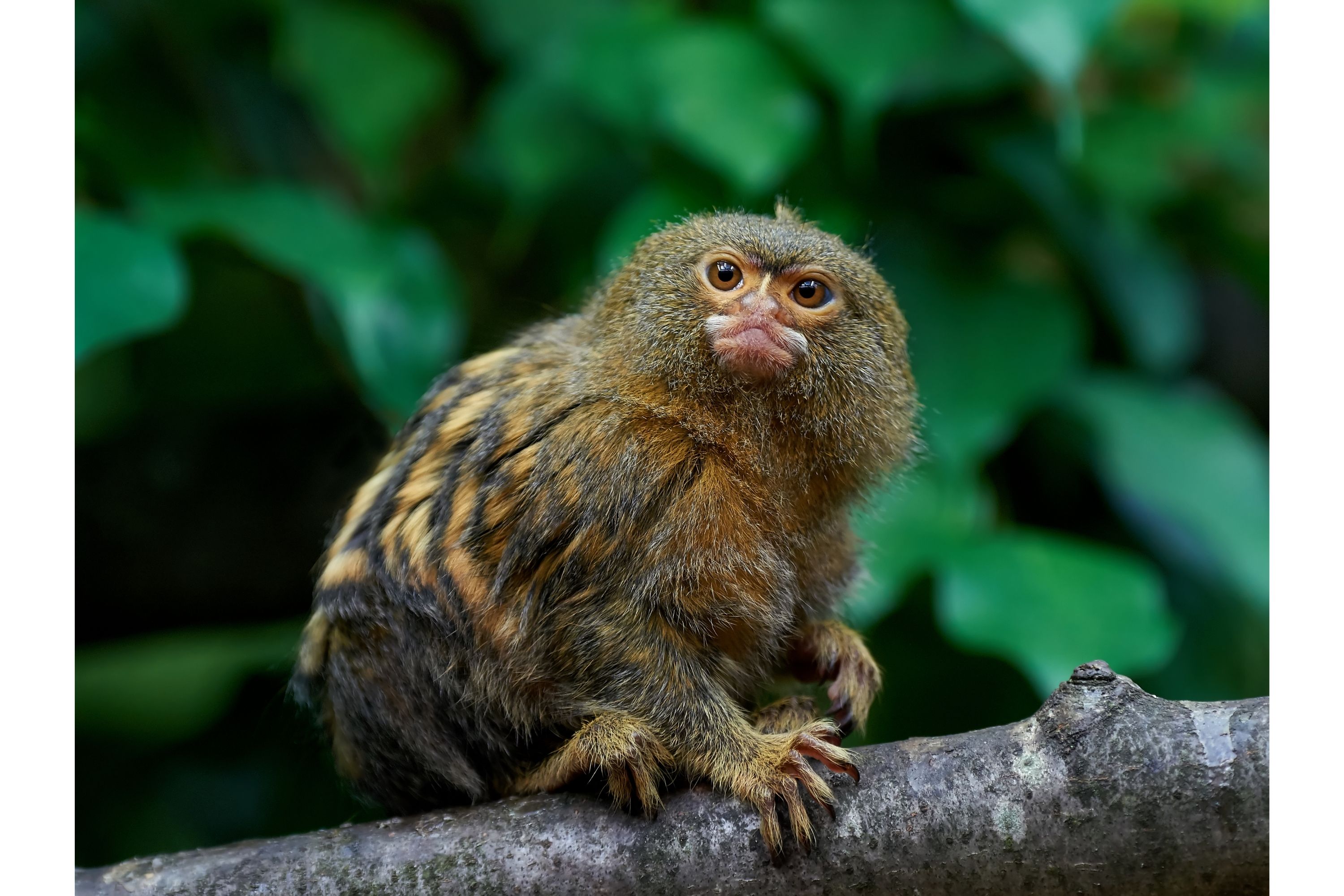Pygmy marmoset
(Cebuella pygmaea)

Description
The pygmy marmoset, genus Cebuella, is a small genus of New World monkey native to rainforests of the western Amazon Basin in South America. It is notable for being the smallest monkey and one of the smallest primates in the world, at just over 100 grams (3.5 oz). It is generally found in evergreen and river-edge forests and is a gum-feeding specialist, or a gummivore. About 83% of the pygmy marmoset population lives in stable troops of two to nine individuals, including a dominant male, a breeding female, and up to four successive litters of offspring. The modal size of a standard stable troop would be six individuals.Although most groups consist of family members, some may also include one or two additional adult members. Members of the group communicate using a complex system including vocal, chemical, and visual signals. Three main calling signals depend on the distance the call needs to travel. These monkeys may also make visual displays when threatened or to show dominance. Chemical signaling using secretions from glands on the chest and genital area allow the female to indicate to the male when she is able to reproduce. The female gives birth to twins twice a year and the parental care is shared between the group. The pygmy marmoset has been viewed as somewhat different from typical marmosets, most of which are classified in the genera Callithrix and Mico, and thus is accorded its own genus, Cebuella, within the family Callitrichidae. The biggest threats are habitat loss and the pet trade. The fur colour is a mixture of brownish-gold, grey, and black on its back and head and yellow, orange, and tawny on its underparts. Its tail has black rings and its face has flecks of white on its cheeks and a white vertical line between its eyes. It has many adaptations for arboreal living including the ability to rotate its head 180 degrees and sharp claw-like nails used to cling to branches and trees. Its dental morphology is adapted to feeding on gum, with specialised incisors that are used to gouge trees and stimulate sap flow. Its cecum is larger than usual to allow for the greater period of time gum takes to break down in the stomach. The pygmy marmoset walks on all four limbs and can leap up to 5 m (16 ft) between branches
Taxonomic tree:







